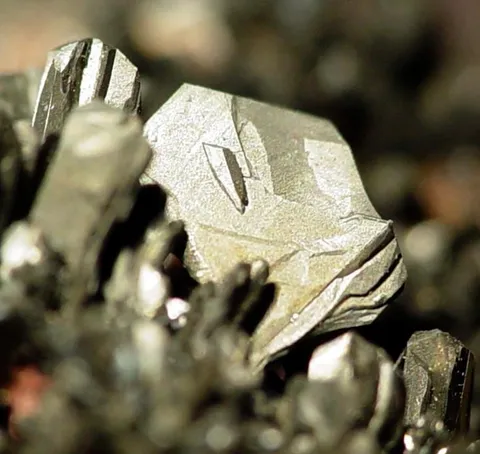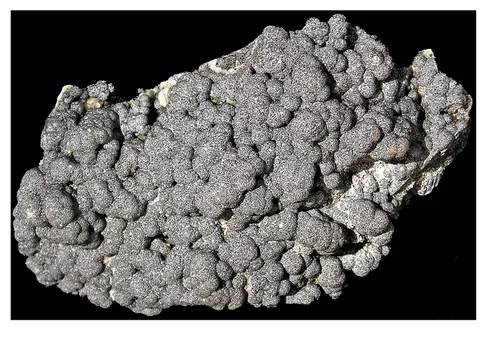ARSENIC
Class : Elements
Subclass : Metalloids
Crystal System : Trigonal
Chemistry : As
Rarity : Uncommon
Arsenic is a primary mineral of nickel-cobalt-silver-bismuth and uranium hydrothermal veins, it has been known since Antiquity. Its name comes from the Greek arsenikos (male), due to its powerful properties. It almost never occurs in isolated crystals, but in nodules or kidney-shaped masses, hilly or concretionary with very fine grain, sometimes stalactitic. Native arsenic has a bright metallic luster and a light gray color on a fresh break or scratch ; very sensitive to weathering, it is covered in a few days with a brown then black coating of oxidation. This alterability means that it is never found on outcrops where it is covered with small crystals of arsenolite or fibroradiated globules of pharmacolite. Native arsenic is a very appendix ore of arsenic. This mineral is indeed too rare to constitute a real ore and industrial arsenic is extracted almost entirely from sulfides, in particular arsenopyrite. Native arsenic is a violent poison. As its dust easily impregnates the skin, hands and mucous membranes, it must be handled with gloves in secure places, out of the reach of novices and children. It is likely to form water-soluble derivatives, the risk of poisoning is high.
Main photo : Arsenic from Kladno III mine, Czech Republic © Rob Lavinsky
Arsenic in the World
Photo : Arsenic from Roata Mine, Cavnic, Maramures County, Romania © Vilhelm Farago
Twinning and special crystallizations
Twins are rare on {10 -1 4}.
Fakes and treatments
No fake or treatments identified for this mineral species.
Hardness : 3.5
Density : 5.63 to 5.78
Fracture : Irregular
Trace : Gray
TP : Opaque
RI : -
Birefringence : -
Optical character : -
Pleochroism : None
Fluorescence : None
Solubility : -
Magnetism : None
Radioactivity : None


